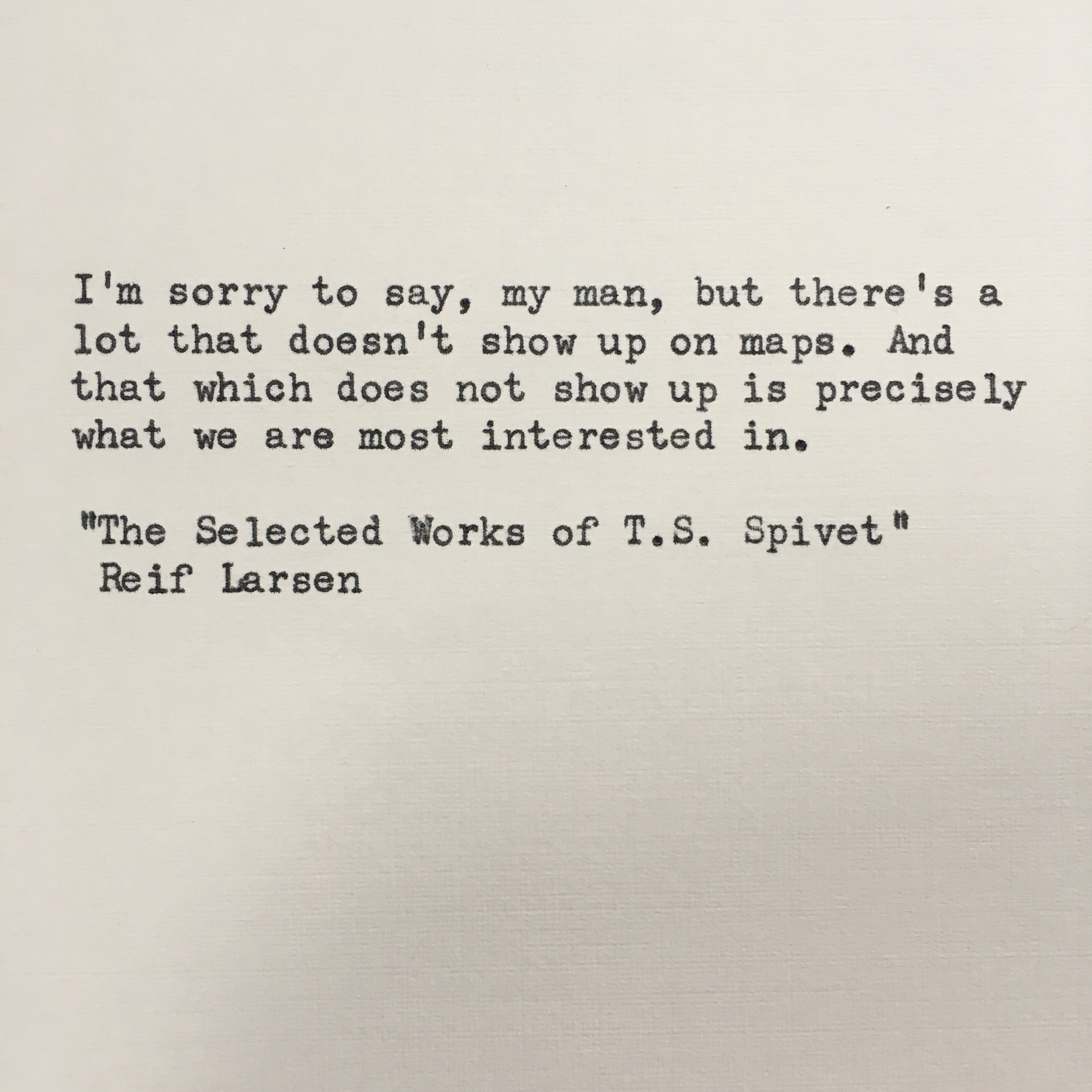What I Love About Bridges
The main square in Lindos is actually a circle and at its more cluttered times an ununiformed man appears from somewhere to solve problems. Buses come and go on some sort of indecipherable schedule, so do all sorts of cars coming into town or from the beach, and when things stop working – traffic jams, bad parking choices, taxis picking up or dropping off outside whatever their designated area might be – he gently paces over with a non-negotiable solution. He meets yelling with calm, his eyes pierce, and what he lacks in gun and badge and traditional trappings of authority, he makes up for with presence. The LBJ of Rhodes, perhaps. He gets close, and when he speaks it’s stern and thoughtful with a warranted threatening undergird, the way I remember Dad pausing on the phone with me when my behavior needed some addressing and calmly closing a conversation with something like, As I said, we’ll speak about this when I get home -- terms dictated, and they're not mine.
His best work, though, was unquestionably his most recent. I was walking past the square/circle to find a quiet rooftop with a view of the Acropolis and eventually the sunset where I could read a bit and sip that Fix beer I’ve fallen more and more for when I caught sight of him only because I was trying to see who was so angry. No, no, it wasn’t him, it was someone on a scooter who was dressed like he’d robbed every tourist-serving trinket shop within a five-mile radius: a shirt that said “RHODES” in kitschy Greek lettering above a flawed rendering of what the Colossus was presumed to look like until scores of experts agreed a long while ago that no, the statue never straddled the entry point to the city, a little fedora that seems more fitting in Italy than here, and a thickly brown-beaded necklace that I’ve been peddled a thousand times on my walks. This man was the source of the anger, and all he was met with was a crippling stare and a fully extended arm pointing to a sign with a red “X” on it. To this moment, I have no idea what rule he was violating, but a line had apparently been crossed.
There were a number of people around and I became part of a larger audience united only by its concern: what the hell was about to happen. It was stare and point against increasing rage, and when it built and built long past all of our preconceived breaking points, we did that thing where we looked around and made the sort of do-you-see-what’s-happening-here? eye contact that witnesses of anything pass back and forth. And then it happened, like a heavyweight waiting until the twelfth round to knock his opponent out, the man on the scooter took off amidst a flurry of anger and hand gesture, trying to save face as he sped off, miscalculating his approach up the hill and struggling as a result. The victor slowly walked back to his post across from a restaurant that plays reggae covers of well-known music and promises “Here is the best Greek food in the city!” as the crowd moved on, having lost the thing that brought it together. I felt like clapping, but moved on also.
I’m not sure what’s revealed in moments like these, but something certainly is. The temptation is to take it and spread it far and wide, making something universal out of a brief entertaining spell that might answer the inevitable So, how was Greece? question. More interesting than any boilerplate answer about history or beaches or how delicious the food was, this story arms you with a little more texture. A way of suggesting a couple of things at once: how interesting your time abroad was that you were able to witness things like these (and presumably dozens of other similarly distinct moments that you haven't even mentioned yet), and how different it was from your regular day-to-day – in essence, two of the driving forces behind why people travel to begin with: snippets of literally foreign experience that can be transported back to whatever your normalcy is.
And nothing is wrong with this. Isn’t there something extremely plausible about a visitor answering the So, how was New York? question similarly? Yes of course Central Park was quite incredible and so was Times Square in all its chaos and we saw a show on Broadway and we found the most delightful little Italian place when we were walking and it started raining and it was definitely DEFINITELY worth hopping over the river to Brooklyn as well because when we did we took the subway and you’ll never believe what we saw.
Rhodes is fascinating for a number of reasons, but here are the two that I particularly enjoy: first, in the old city itself, part of it still walled, there are hundreds of unnamed streets. Here’s a city thousands of years old that has simply never decided it was important enough to give names to roads. Almost as if it was built on a simple bedrock: people will find a way. It’s difficult to argue with that much history because all it offers is support. Yep, people have and people will. I like things that bestow such a responsibility on people – my favorite authors do just that, refusing to spoon-feed the reader – though I’ve never found it in a city quite like this.
The second thing I enjoy is that when you mention Rhodes, the most common association is with the Colossus, one of the original seven wonders of the world that was destroyed in an earthquake and never rebuilt a couple of hundred years before Jesus Christ lived. Nobody knows where it stood or what it looked like, but we do know it was measured in cubits (roughly the size of the Statue of Liberty), paid for in talents, and that it was there at some point. Still, its ghost is clearly quite powerful.
Two things then: a building you can’t see and streets you can’t navigate. Revealing, but how?
One of the most joyous chapters in Notre-Dame de Paris has a sentence in it that has the clause Victor Hugo wrote that you see above. If I read that book a hundred times, I bet I’d skip right past it. But I didn’t when I did, and I loved it, and the chapter it falls in is one that he repeats in Les Miserables as well, one that irritates a lot of people and has scholars wondering about the necessity of its inclusion. He has the plot running nicely and then steps back to take his readers on a birds-eye tour of Paris. The neighborhoods and the roads, the people and the rivers, and of course, this fraction of a moment with bridges. We know that they link, but I’d never considered the true effect of their linkage: that they allowed something to spread beyond its original confines, that a city could now crawl a bit, and that slowly, what existed on one bank would find its way to the other. That one could release into the other, they could complement and interact. First houses, and then, perhaps, palaces. It’s beautiful to me, this now-dated version of development.
We don’t find ourselves awed by the function of bridges the way Hugo’s world did. To us, they exist and we marvel at their history, at their majesty. You must walk across the Brooklyn Bridge or take a boat under the Sydney Harbor Bridge or take a photo of the Golden Gate Bridge from Sausalito if you go, but we take them for photographic spectacles at best, irritated that they’re not more conveniently situated or less tolled at worst. Again, nothing wrong with this, as it seems only normal that architectural progress and advances in urban planning would get us here, but it does diminish the impact of what Hugo snuck into his book we best know for a hunchback.
I remember a weekend I spent in Pittsburgh where I watched three games at PNC Park where the Mets played the Pirates and from where I sat I could see the yellow-painted, industrial-looking bridges cross either the Allegheny or the Monongahela River (I can never remember which one is on which side). I was told there were more bridges in that city in Western Pennsylvania than in all of Venice, though it wasn’t really something that occurred to me as I walked across those beautiful bridges in Italy.
When I lived in San Francisco, I actually associated the Golden Gate Bridge more with suicide than anything else, and will never forget the story of one jumper who said in his note that he wouldn’t do it if he got a smile from a single stranger on his walk there. I’ve probably liked a hundred photos of that same bridge on Instagram.
Part of my 50K was twice across a bridge in rural Virginia that was built a decade before the war unaware that it would become an imperative piece of the Confederate supply chain. Running across it, you had no shelter from the sun and a slight view of the Appomattox River beneath. I remember it most for a couple of people who’d parked their bikes and were looking over. In one of those thoughts you have when you’re running for a while I wondered: what if I took that bike?
And goodness, there’s The Power Broker, a brilliant book about Robert Moses and the many things he built in New York City. Bridges after bridges after bridges. His most famous, perhaps, being the Verrazano Narrows Bridge, one that will take you from Staten Island to Brooklyn and back, and one I know best as holding both the start line and mile one of the New York City Marathon. I’ve run under it in half marathons on both of the boroughs it connects, too, and it’s just as gorgeous that way. You get to mile sixteen of the marathon once you leave Queens and get to Manhattan over the Queensboro Bridge, and I remember it mostly for its silence: the first time all race you don’t hear people cheering, just footsteps, increasingly tired and holding up bodies that know somewhere that hey, we still have ten miles to go. On both bridges, if you stop when the race is happening, you can feel them sway.
The Brooklyn Bridge is beautiful, too, but makes me think of the Leaves of Grass days of a city I know so differently and Whitman talking about New York from the Brooklyn side.
Cross from shore to shore, countless crowds of passengers!
Stand up, tall masts of Mannahatta!—stand up, beautiful hills of Brooklyn!
Throb, baffled and curious brain! throw out questions and answers!
Suspend here and everywhere, eternal float of solution!
It was ferries between Brooklyn and Manhattan then, and there are ferries now, but back then there was no choice.
I remember being in London and watching King Lear at the modern reconstruction of The Globe. London was also bridge-less back in Shakespeare’s time, and it meant that the sides of the river needed to be self-reliant. They weren’t neighborhoods then, they were different cities that could see each other from their coasts. None of this living-in-one-place-and-working-in-another phenomena that we just presume now.
There are a whole lot of locks locked to a bridge in Paris that I don’t remember, but I had to include it here because I want to live there someday.
What about some underrated bridges? I always love crossing the Delaware River Bridge because for whatever reason, I like the views and there’s something about the inconsequence of Delaware that is both unfair and probably a bit true.
There’s a little bridge over the Colorado River in Austin that I must have run across a thousand times, and it always reminds me of the closing steps before a water stop. And another one at a different part of the trail that means I’ve just passed some baseball fields and am about to run past three places I used to live.
There was a makeshift bridge I drove across that summer I lived with the Aboriginals in Far North Queensland. It was a set of logs at the bottom of a downhill and the base of an uphill and whose resilience and function we collectively wondered about before we sort of just said fuck it, we have no other option, and put the pickup truck into first gear. I raced down that downhill and up that uphill once we crossed. I was 19 and probably an idiot and certainly shoeless. I also wore a bandana across my nose and mouth as I drove because the roads were a dusty red dirt and I didn’t want that in my lungs. In the passenger seat was Old Fella, the most senior Aboriginal, the one entrusted with shooting the bull before we left. We ate well, and when we felt like something else, we’d sit under the stars and fish and occasionally reel in a small shark that was delicious over a fire.
Mom and I searched all over the place for a bridge on a roadtrip near Corinth in Greece that began in Athens, and it spanned a river that was difficult for a number of Roman Emperors to find their way across. I walked off the bridge a way back and now have a photo of Mom in the middle of it against the wonderfully colored sky, and you sort of have to really look for her to see her, but she’s there. We’d had an interesting day but we left Corinth after that and slept in Argos after stumbling across a restaurant that we found with our noses because they were barbecuing the most delicious food and we had plenty plenty.
There are a few bridges over the Charles River in Boston, and from one I watched Amelia row underneath when she was in college, and on another, I wondered (and still do) what all the markings meant while I sipped on a bottle of wine and waited for Nano to arrive sometime after the sun had set.
I have a photo of Dad in Lexington, Massachusetts, standing on a bridge that witnessed the first shots of the Revolutionary War. We had spent some time in New Hampshire (we’d even seen the Manchester Fisher Cats play some minor league baseball) and decided to drive circuitously back to the airport. Underneath that bridge is a river I still don’t remember.
One more: the Led Zeppelin song that talks about a bridge (called The Crunge), one of my favorites of theirs. The concept of a bridge in music deserves a discussion of its own, but this song is one that brings me back to high school when I fell in love with them, and then to college when I listened to nothing but the second semester of my freshman year. I had a poster of theirs on my wall, as I recall, and on Tuesdays – when I wasn’t working at the steakhouse or wasn’t visiting Gary in prison – I’d fall asleep after class and put them on, making sure The Rain Song was somewhere in the mix as well.
The other day I woke up before the sun and got on my scooter that had a broken horn after I ran for a bit and drove up the only road out of Symi’s main port so I could get high enough to see the sun rise. I bought cherries the night before and I took them with me along with a pair of goggles. Both in different pockets. I crossed no bridges and saw nobody trying to restore order to a chaotic traffic situation. It was quiet. And then I started the scooter again and drove down to a different beach and put the goggles on and had a swim. A bit after, I found a place that sold me a ferry ticket and a cup of coffee before I returned the scooter and passed some time waiting for my boat to Rhodes with a couple of crossword puzzles and a gyro. And when I got there I wandered some nameless streets and went to a couple of places where the Colossus supposedly once was. Then I rented a car and drove down the coast to Lindos.
And truly, I’m now sitting on that rooftop I sought out hours ago with a view of the now beautifully-lit Acropolis and the sunset is long passed but I did read a bit and am still sipping that Fix beer I love and I’m about to leave because it’s not as quiet as it once was. People are trickling in and the music is getting louder and I’m not kidding that I’m walking out underneath the oppression of an absurdly terrible song that keeps repeating only this: I’m looking for ways over water, which is both perfect and ghastly, and a sign that the palaces now being built here are replacing houses I was perfectly happy with.








